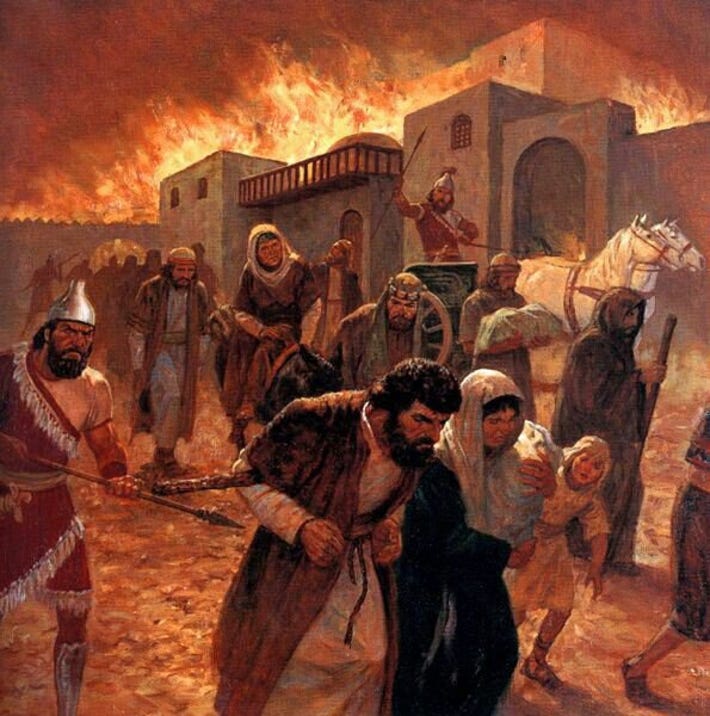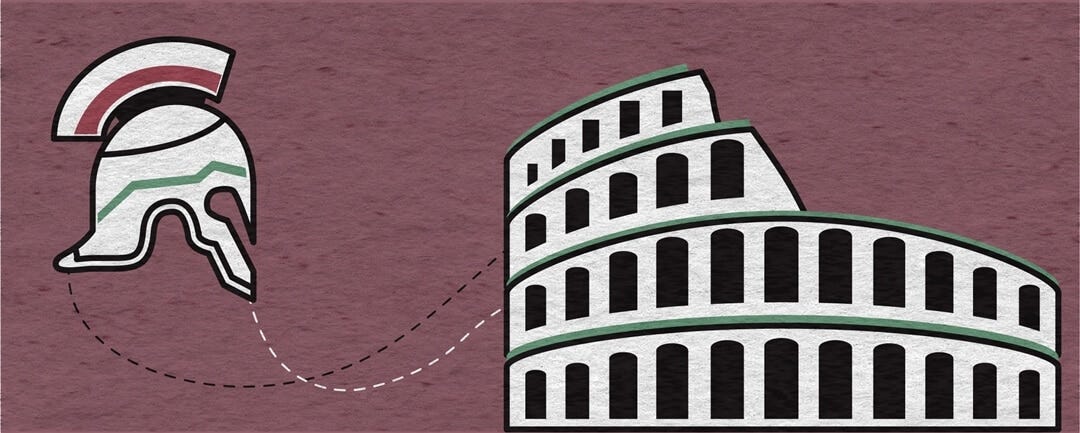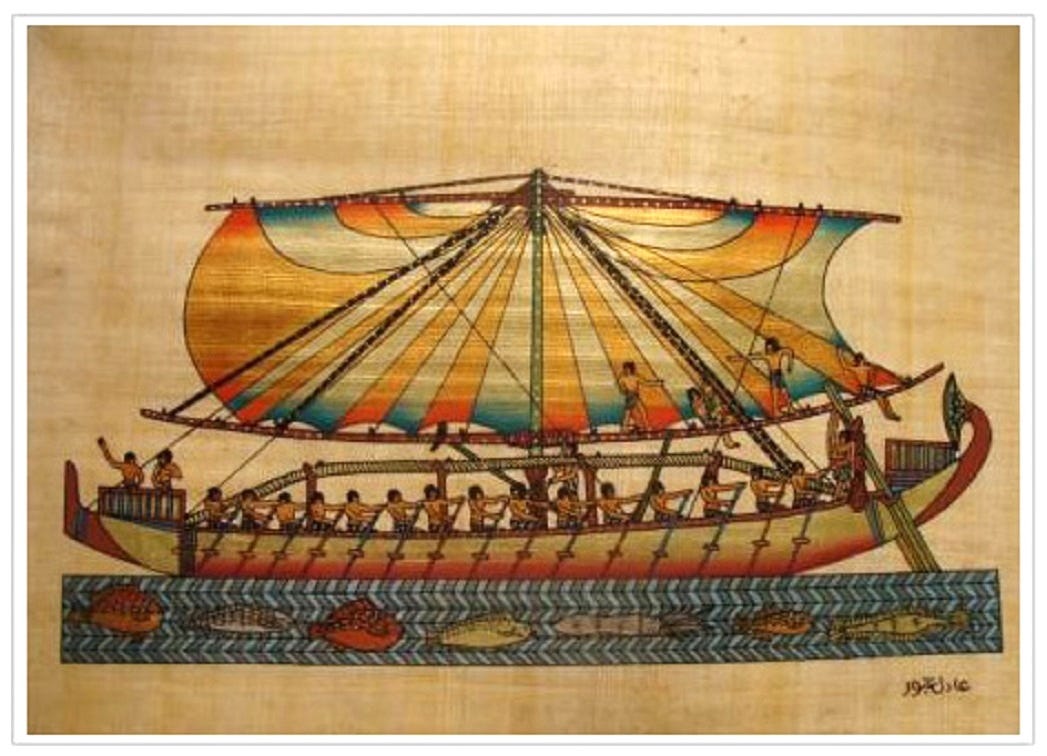There Is No Such Thing as a Palestinian
Arabs from many nations moved to the land of Israel and claimed a new identity.
‘Thou hast set all the borders of Thy earth’ - Psalm 74:17
If you are a person bewildered by the animosity between Arabs and Jews, this article is for you.
If you scratch your head trying to understand the centuries-long conflict between Arabs and Jews – a bitter fight over a claim both make on a piece of land called Israel (if you are a Jew) or Palestine (if you are an Arab), then this article is for you.
I would encourage you to read this historical summary of the Arab/Israeli conflict. This article will also be of tremendous help in your understanding of the Bible.
The next few minutes of reading can save you from a lifetime of confusion.
There is no such thing as a 'Palestinian' or 'the Palestinian people.'
There are Arabs from Arabia, Jordan, Egypt, and other countries who identify as Palestinian.
The Jews were in the land of Israel millennia before the Arabs ever set foot in it.
Palestinians are like transgender people. They have assumed an identity that isn't based on truth, history, and reality, yet they demand that others believe a lie and condemn those who dare to speak the truth.
Here Is the Truth about the Land of Israel
In 2091 B.C., a young man named Abram was 'called by God' out of the land of Ur, a land between 'two rivers' (Mesopotamia is the Greek word for ‘the land between the two rivers, the Euphrates and Tigris rivers) to a land that God promised to give ‘to your descendants’ (Genesis 15:18-21), sometimes called 'The Beautiful Land' (Daniel 11:41).
This land of Israel is also known as the Promised Land because the Creator promised it to Abraham and his descendants (see Genesis 15:18-21). However, this land had already been inhabited by the Canaanite people.
Before Israel took possession of the land under Joshua, the land was known as Canaan.
Under Joshua's leadership (b. 1476 BC - d. 1366 BC), the descendants of Abraham drove the Canaanites from their land. By 1400 BC, the land had been ‘conquered.’
For the next four centuries, the land of Israel had a government called ‘Theocracy,’ a form of government that the United States Founding Fathers deemed the best government in history.
Yet, as the Hebrews looked around at surrounding nations, they saw nations with kings, and they sought to have an earthly king over them.
The LORD granted Israel their wish.
The new kingdom (e.g., ‘a king’s dominion’) was established in the land in 1051 BC and was called the Kingdom of Israel.
What Happened to the Philistines (Canaanites)?
The Philistines (Canaanites) were a Sea Peoples group with southern European origin (Greece), eventually migrating to Cyprus and the coasts of Turkey (Anatolia) before settling on the coast of the land of Israel.
Several biblical texts explicitly state that the Philistines originated from Caphtor, also known as the island of Crete (please see Deuteronomy 2:23; Amos 9:7; Jeremiah 47:4; Genesis 10:14).
Most scholars equate Caphtor with Crete, based on Egyptian and Ugaritic texts, where Keftiu corresponds to Crete or the southern Aegean region.
That means Philistines are not Arab, they are European.
After the Philistines (Canaanites) were dislodged from the coast through Israeli conquest (1400 BC to 1051 BC), the Canaanites got into ships and left the land of Israel.
The evidence is clear that the Canaanites migrated to North Africa.
Close to the Pillars of Hercules (e.g., Gibraltar), on the south side or African side of the Mediterranean, the vanquished Canaanite refugees built two cities:
"They [the Canaanites] built THE CITY OF TINGE AND TANGER IN NUMIDIA, where were two pillars of white stone, placed near to a great fountain, in which, in the Phoenician tongue, was engraved: WE ARE CANAANITES, WHOM JOSHUA THE THIEF CHASED AWAY" (Relations of the World and the Religions Observed in All Ages, Samuel Purchas, Book I, Chapter XVIII, p.85)
In The Complete Works of Josephus, translated by William Whiston, there is a footnote on page 110 that corroborates that the Canaanites went to North Africa:
Moses Chorenensis sets down the FAMOUS INSCRIPTION AT TANGIER [TANGER] concerning the old CANAANITES driven out of Canaan by Joshua thus:
‘We are those exiles that were governors of the Canaanites, but have been driven away by Joshua the robber, AND ARE COME TO INHABIT HERE'.’ (Kregel Publications, Grand Rapids. 1988)
In time, these inhabitants of Northern Africa became known as Berbers and Moors.
From the city of Numidia, the Canaanites eventually crossed the Straits of Gibraltar and reached as far north as Scandinavia and the British Isles. In these countries, and in Europe in general, the Canaanites have left evidence of their existence over large land areas. They are known to anthropologists as the Beaker People.
Again, the Philistines were European, not Arabic.
Back in Israel
After conquering the Canaanites, the nation of Israel united under three successive kings. First Saul (1051 to 1011 BC), then David (1011 to 971 BC), and then Solomon (971 to 931 BC). As you can tell, each of the three kings of United Israel reigned for 40 years.
The nation of Israel, however, split into two kingdoms in 931 B.C. over a dispute concerning taxes.
Ten of the 12 tribes (families) of Israel formed the northern Kingdom of Israel, with its capital in the city of Samaria.
Two tribes (Judah and Benjamin) made up the southern Kingdom called Judah, with their capital remaining the ancient city of Jerusalem.
In 722 B.C., the northern Kingdom of Israel fell and was destroyed by the Assyrians, whose capital was Nineveh. The wicked Assyrians took captive the men of the 10 tribes of the north, afterward known as 'The 10 Lost Tribes.’
Assyria forced pagan men they'd captured from other nations to move to northern Israel and intermarry with the remaining Israeli women.
I tell Christians all the time, if you want to know ‘true Christianity,’ ask yourself, ‘who are the people reaching out to the ‘half-breeds,’ ‘outcasts,’ and ‘poor’ of this world.
The 'half-breed' descendants of Israeli women and pagan men came to be known as 'The Samaritans.'
Jesus sat with the Samaritan woman at the well and loved her when Jews were avoiding them.
The word Jew is an abbreviation of Judah. God's Old Testament people were called Hebrews (which means 'to cross over') until the fall of the northern Kingdom of Israel in 722 BC.
After 722 BC, the people of the southern kingdom of Judah began to be referred to as 'Jews' (meaning 'people of Judah').
In addition, once the northern kingdom had been destroyed by the Assyrians and had become 'Samaritan,' the prophets of the Old Testament began calling Judah by the name Israel (again).
The Jewish Babylonian Captivity

The Jews stayed in the land of Israel that God had given them until 586 B.C., when a new world empire – Babylon – conquered the Jews and took them into Babylonian captivity or 'The Babylonian Exile.'
The entire Old Testament revolves around this 'Exile' of the Jewish people. Daniel and Ezekiel lived almost their whole lives in Babylon (modern-day Iraq/Iran) and are buried there. Jeremiah, the mentor of Daniel and Ezekiel, lived through the seige of Jerusalem (586 BC) and was spared death by Nebuchadnezzar because his soldiers found Jeremiah imprisoned in the basement of King Zedekiah’s palace, the king of Judah.
The Persian Conquest of Babylon
When the Persian Empire defeated the Babylonians and conquered the city of Babylon in 539 B.C. (see the description of the fall of Babylon in Daniel 5), Cyrus, King of Persia (Isaiah 45:1), allowed the Jews to return to their land of Israel. Not all Jews did. Many remained in Babylon (Iraq and Iran) until their deaths.
The Jews who returned rebuilt the walls of Jerusalem, the Temple, and reinstated the sacrificial system.
During their Babylonian captivity, they learned how to build synagogues since they had no access to the Temple. In addition, the Jews had learned Aramaic, the business language of the known world.
For the next five centuries, until the coming of Jesus Christ, the Jews remained in their land of Israel, building a nation and seeing the rise of various Jewish religious sects, including the Pharisees and the Sadducees.
These five hundred years refer to the period between the Testaments (i.e., between the Old Testament and the New Testament).
During this Intertestamental time, the Greeks under Alexander the Great conquered the Persian Empire (the beginning of Western Civilization). The Romans then conquered the Grecian Empire, but kept the Greek customs (Hellenism) and language (Greek) throughout the Roman Empire.
Jesus came to earth ('Emmanuel' - God with us) when the Roman Empire ruled the world.
Rome Rules the World

When Jesus walked the earth (4 BC to AD 30), Rome was the dominant power in the world.
The Romans began to have trouble with the portion of the empire known as Israel. The natives of Israel, called “Jews” (e.g., short for “Judeans” or people who descended from the family or tribe of Judah), were expecting a coming Messiah who would lead their little country to global prominence.
The Jews often resisted Roman rule, and they were in the habit of assembling unlawfully, protesting regularly, and arguing forcefully against Roman rule.
The Roman emperor raised a wary eye against the Jews and their seditious ways. However, knowing that Rome was threatened by any claim of a Jewish Messiah, Jewish religious leaders used Rome’s fears for their own advantage to thwart the influence of a young Jewish carpenter from Nazareth.
Jewish religious leaders brought Jesus before the Roman governor Pilate and claimed that “This man says he is the Messiah, the King of the Jews!” Pilate acquiesced to the Jewish demand that Rome crucify him who dared to claim himself “King of the Jews.”
Around four decades after Jesus of Nazareth died on a cross, a new Roman emperor could no longer ignore the ever-increasing Jewish rebellion against Rome. More Roman soldiers were tied up in Israel fighting sedition than anywhere else in the world, and the Roman emperor’s patience ran out. He needed his troops elsewhere, so he decided to handle the Jews once and for all.
Nobody knows why the Roman emperor didn’t just kill the Jews, possibly because he was too superstitious to obliterate them, fearing an offense against the gods utterly.
Instead of killing the Jews, the Roman emperor decided to forcibly remove the Jews from their land using Roman legionnaires and relocating them to the far-flung corners of the Roman empire.
In America during the 1820s, the American empire did the same thing to the native Americans, in a forced relocation to “Indian Land” (Oklahoma) that we call “The Trail of Tears.” The Romans forcibly relocated the Jews in a long, sad journey that Jewish history calls the diaspora. The word diaspora comes from Greek and means “scattering.”
We derive our English word "dispersion" from this Greek word. The diaspora begins in A.D. 70.
Rome Renames Judea as Philistia

Judea (Iudaea) was the Roman name for the Land of Israel during the heyday of the Roman Empire.
Judea stretched along both sides of the Jordan and included, besides Judea proper, most of the coastal plain, Samaria, most of the Galilee, the Golan Heights of today (and land eastward), the west bank of the Jordan, and even the sea coast of Israel (called the Gaza Strip today).
The Romans called this land Iudaea, a translation of the Hebrew Judah.
Keep reading with a 7-day free trial
Subscribe to Wade Burleson at Istoria to keep reading this post and get 7 days of free access to the full post archives.







